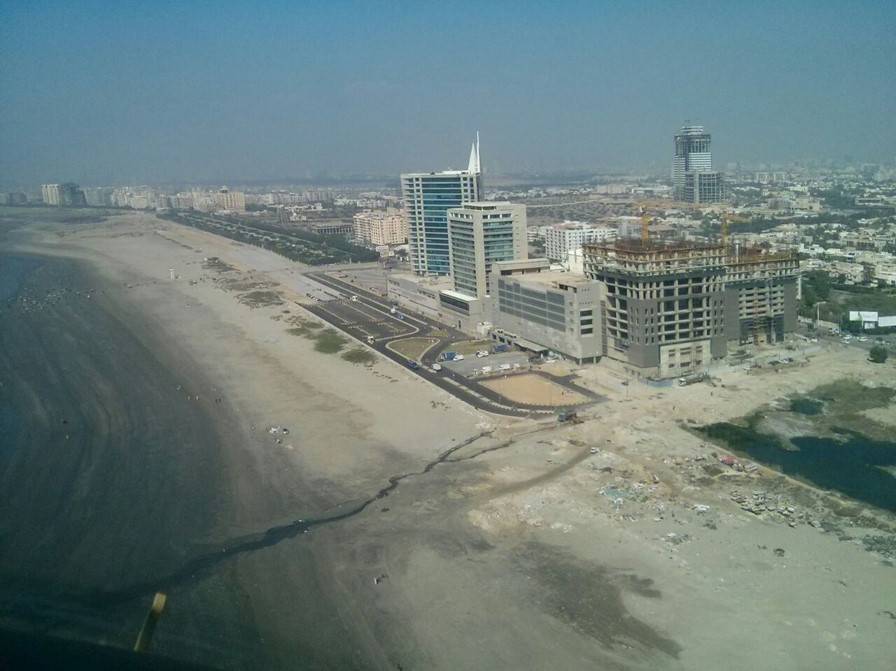Last week more than 150 people were unaccounted for after a high-rise partially collapsed near Miami Beach leaving at least four people dead and 11 injured, officials said. The 12-story building with 136 apartments was constructed on reclaimed wetlands. It’s yet unclear at this stage why the building collapsed, but it has been speculated that it had been sinking over time, which may have contributed to the collapse.
The incident raises serious questions about the sustainability and viability of skyscrapers on beachside locations. Despite that, an environmental tribunal recently in Karachi set aside a notice issued by the Sindh Environmental Protection Agency (SEPA) for public hearing on the Environmental Impact Assessment (EIA) of a multistoried luxurious commercial-cum-residential project proposed to be built on the DHA’ seafront by a private builder.
Another Skyscraper at Beachside
According to the concept plan the total built-up area of the high-rise would be 13,200,203 square feet. Located at Main Edhi Avenue, the project is comprised of 18 towers (two commercial and 16 residential) having basement and ground plus 37 floors in each tower.
The seafront of Karachi, quite a long time, has always been a prime location especially for recreation and luxurious residential schemes. However, the trend of high-rises – though not a new – but surely an infrequent concept to redefine the skyline of the megacity. The recent call of public hearing for EIA by a multistoried high-rise’ construction, therefore, is in the limelight these days. There is no denying that apartmental residence at seafront is one of the high-end luxury to experience an extravagant lifestyle, but it also has some repercussions.
Sludgy Crust of the Land
High-rises in Miami, Dubai and New York are often cited as examples of beachside skyline. These are coastal areas solely for residential purpose, away from any commercial or shipping activities. While the Clifton-DHA coast lies between two important seaports where continuous shipping and rigorous oil spillage have polluted the beach water, made its coastal crust sludgy and weakened the geomorphology of soil and land here. On such surface, the idea of big number of high-rises couldn’t be termed as good and safe.
Impact of Corrosion
Undoubtedly, sea breeze is a wonderful experience. However, it might sound strange but the wind by the sea affects the condition of building structure greatly, producing corrosion at the much faster rate. Sand particles in the air and rain eat away coating on cladding, exposing the metal sheets beneath – if these are left untreated further corrosion occur which could result in dangerous structural issues in the future.
Moreover, it is needless to say the beachside of Clifton and DHA is stinky and unhygienic, because of the untreated sewerage discharge directly in the sea.
From coastal erosion to structural deterioration, a sea view sometimes comes at a price; the relentless onslaught of wind and water takes its toll over the years, sometimes taking away the very floor beneath your feet. Therefore buildings with a coastal location have to deal with a number of different maintenance issues that a countryside or city center located property does not.
In simple, buildings’ skyline on the shoreline of Karachi isn’t feasible and durable.
By
Editorial, Infocus


